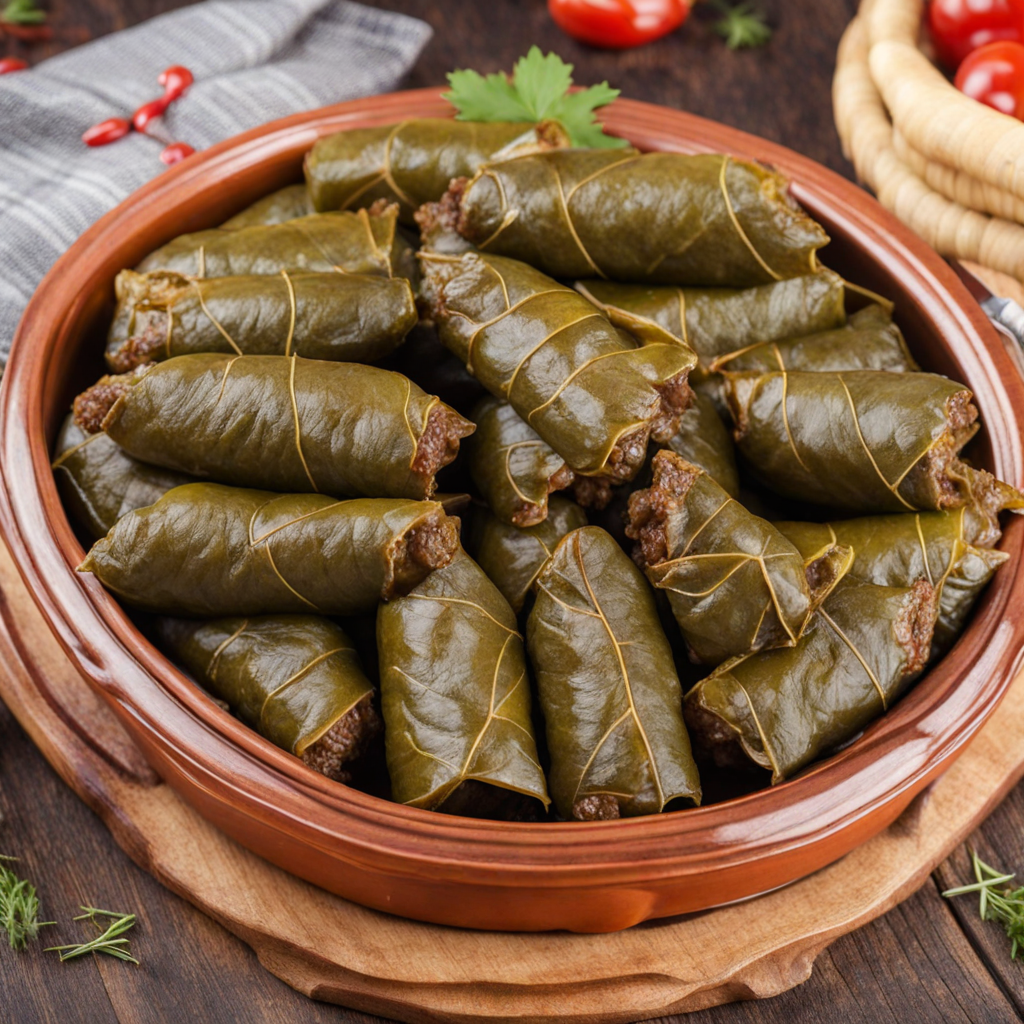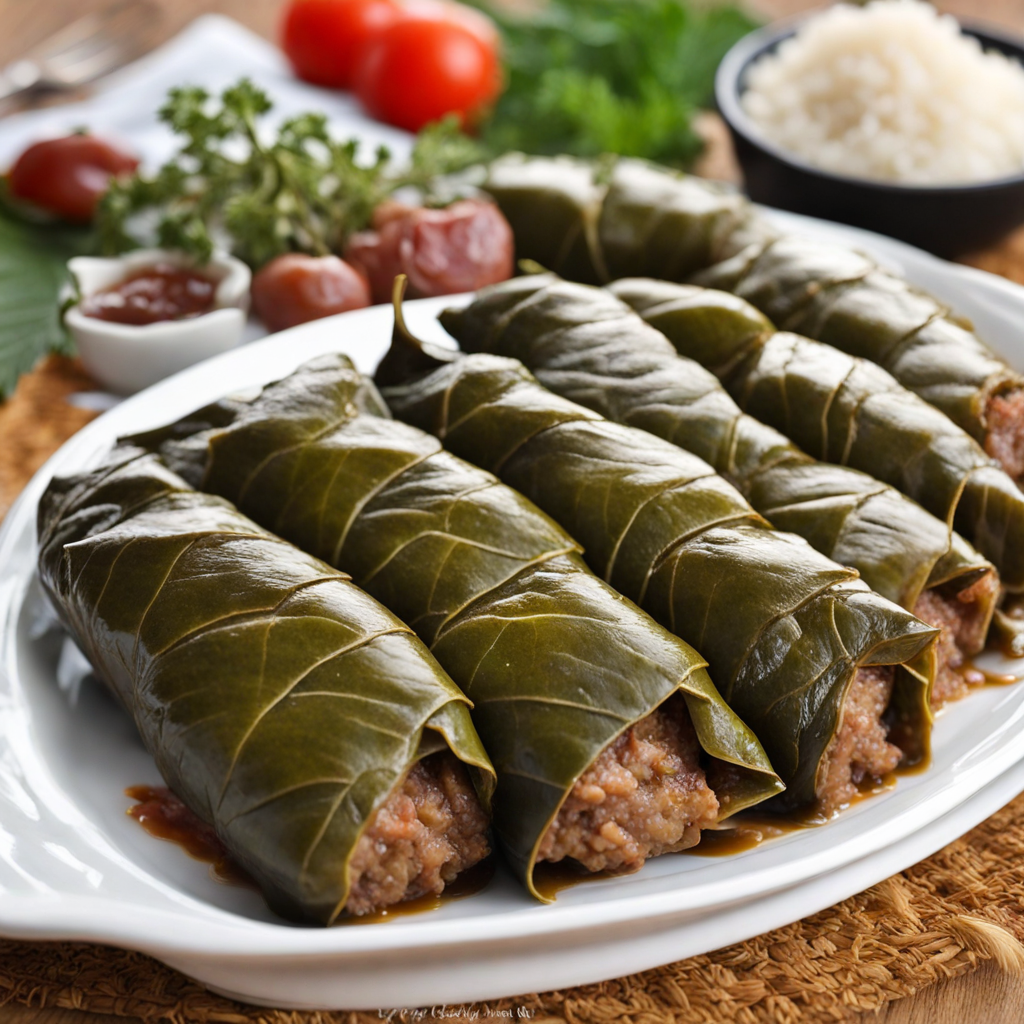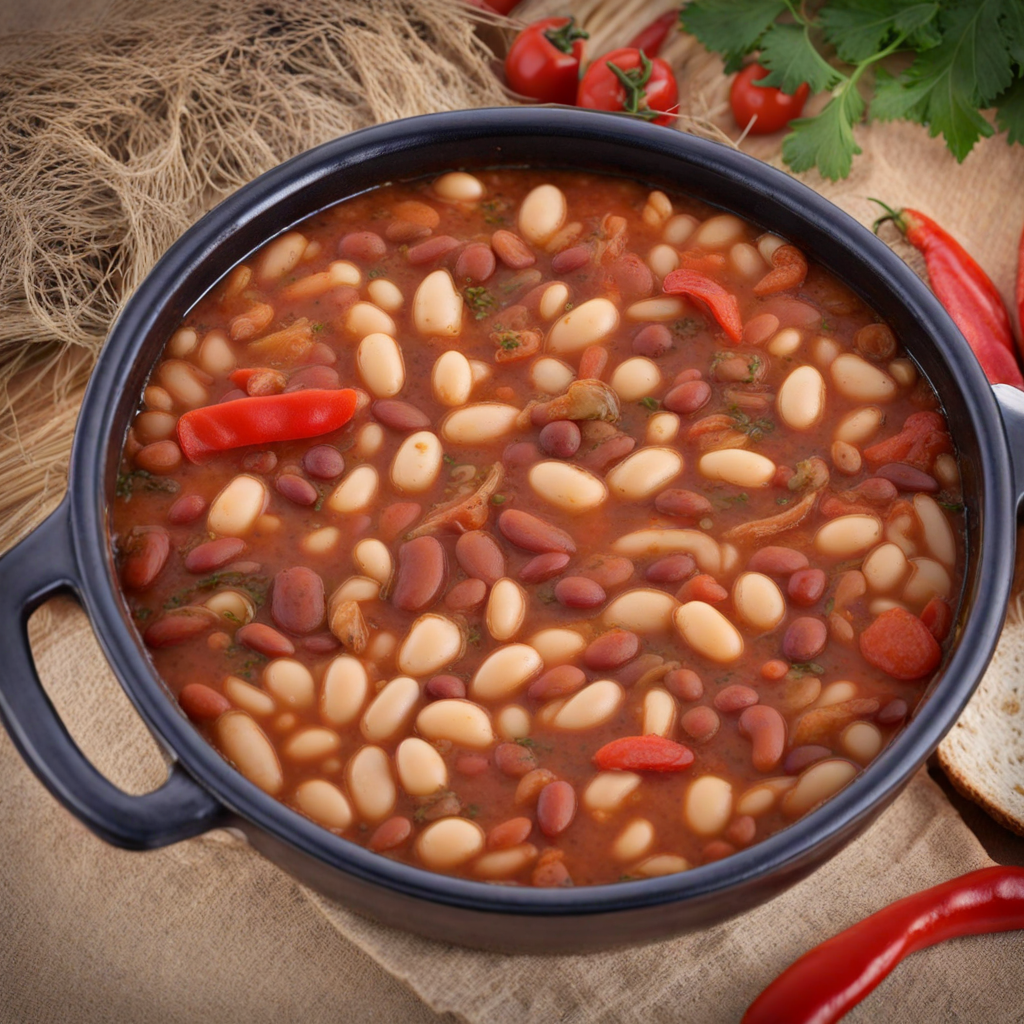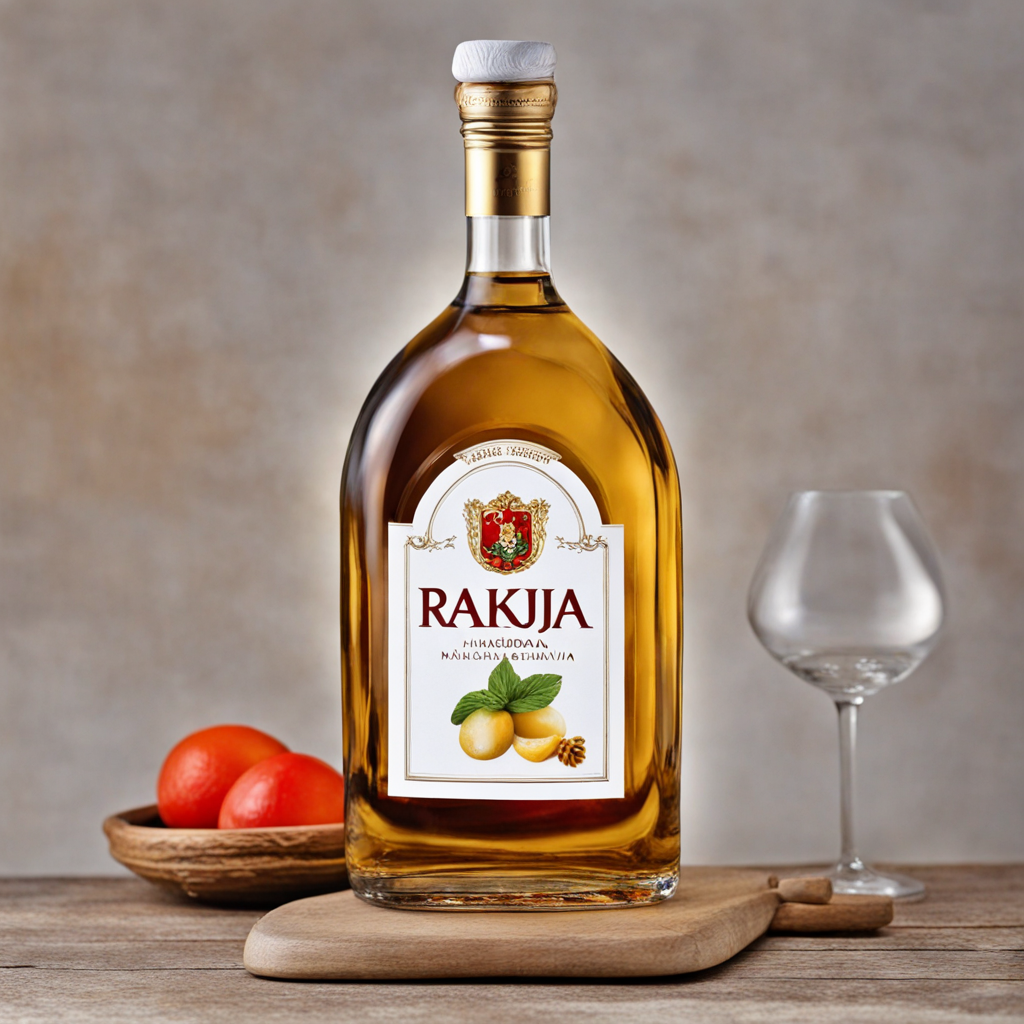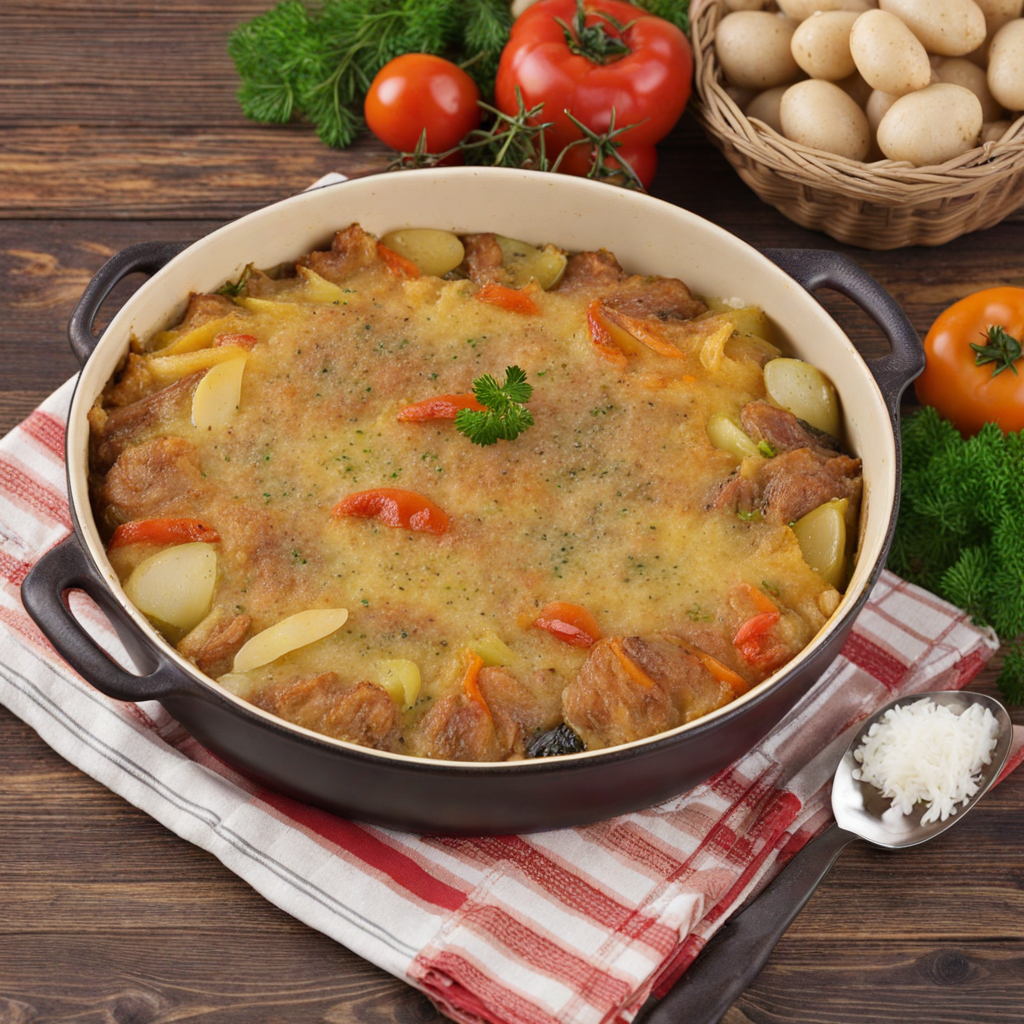Stuffed Vine Leaves
Сарми со лозов лист, or stuffed grape leaves, is a beloved dish in North Macedonia that reflects the rich culinary heritage of the region. This dish is often associated with festive occasions, family gatherings, and traditional celebrations, showcasing a blend of flavors and a cooking style that has been passed down through generations. The dish epitomizes the region’s agrarian culture, where grapevines flourish in the warm climate, allowing for the harvest of young grape leaves that are essential for its preparation. The history of сарми dates back to ancient times, with roots found in various Mediterranean and Middle Eastern cuisines. As peoples and cultures intermingled throughout history, particularly during the Ottoman Empire's reign, the practice of wrapping fillings in leaves became a common culinary technique. The name "сарма" itself derives from the Turkish word "sarmak," which means "to wrap." Over time, North Macedonian cooks have adapted the dish to incorporate local ingredients and flavors, creating a unique variation that is distinct to the region. The flavor profile of сарми со лозов лист is a harmonious balance of savory, tangy, and aromatic notes. The grape leaves impart a subtle bitterness that pairs beautifully with the rich filling, which typically includes ground meat, rice, and a medley of spices. The addition of herbs such as dill and parsley further elevates the dish, while a hint of lemon juice can introduce a refreshing brightness. This complexity of flavors is often enhanced by slow cooking, allowing the ingredients
How It Became This Dish
The Story of Сарми со лозов лист: A Culinary Tradition from North Macedonia #### Origins and Ingredients Sarmi, or stuffed grape leaves, hold a special place in the culinary heritage of North Macedonia and are emblematic of the region's rich tapestry of flavors and traditions. The word 'sarmi' itself is derived from the Turkish word 'sarmak,' which means to wrap. This method of preparation can be traced back to ancient times, where various cultures employed similar techniques to preserve and enhance the flavors of seasonal ingredients. The primary ingredient, grape leaves, is an integral part of the Mediterranean diet, cultivated since antiquity. The grapevine, revered for its fruit, also yields tender leaves that are harvested in spring and early summer. These leaves serve as the perfect vessel for a mixture of rice, minced meat, herbs, and spices, reflecting the agrarian lifestyle of the region. In North Macedonia, sarmi can be made with a variety of fillings, including a vegetarian version that substitutes meat with rice, herbs, and sometimes nuts. #### Cultural Significance Sarmi are more than just a dish; they are a symbol of hospitality, family, and tradition in North Macedonia. Often prepared during significant family gatherings and festive occasions, such as weddings, Easter, and family reunions, sarmi bring people together around the table. The act of wrapping the grape leaves is often a communal activity, where family members gather to share stories and laughter, reinforcing bonds and creating memories. In Macedonian culture, food plays a significant role in expressing love and care. When families prepare sarmi, they often do so with the intention of creating a meal that will nourish both body and soul. The dish carries a sense of nostalgia, reminding many of their childhoods and the kitchens of their grandmothers, where the aroma of simmering sarmi would fill the air. #### Historical Journey The development of sarmi in North Macedonia can be viewed through the lens of the region's complex historical narrative, marked by various influences from neighboring cultures, including Greek, Ottoman, and Slavic traditions. Each culture contributed its unique flavors and techniques, resulting in a diverse array of sarmi recipes that vary from household to household. During the Ottoman Empire, which ruled over the Balkans for several centuries, the culinary landscape underwent significant transformation. The Ottomans introduced new spices and cooking methods, enhancing the traditional recipes with a fusion of flavors. The Turkish influence is evident in the use of spices like paprika, cumin, and dill in the stuffing, as well as the cooking techniques that emphasize slow-cooking in a rich broth. As North Macedonia transitioned into the 20th century, the dish continued to evolve. The establishment of socialist Yugoslavia brought about a sense of unity among the diverse ethnic groups of the region, leading to a cross-pollination of culinary practices. Sarmi became a popular dish across the republics, each region adding its unique twist while maintaining the core elements of the recipe. #### Variations and Regional Differences Today, sarmi are celebrated throughout North Macedonia, but regional variations exist that reflect local ingredients and preferences. In the southern regions, cooks may incorporate local herbs such as mint and parsley, while in the north, stronger spices might be favored. The stuffing can also include different types of meat, such as pork, beef, or lamb, and some families even add a touch of smoked meats for an additional depth of flavor. Another interesting variation is the method of cooking. While sarmi are traditionally simmered in a pot, some families opt for baking them in the oven, allowing the grape leaves to crisp slightly while keeping the filling moist and flavorful. Additionally, the dish can be served with a dollop of yogurt or a drizzle of olive oil, enhancing the flavors and providing a refreshing contrast. #### Modern Adaptations and Global Recognition In recent years, sarmi have gained international recognition, as the culinary world increasingly celebrates traditional dishes and seeks to honor their cultural significance. Chefs and food enthusiasts have taken to social media platforms, sharing their recipes and stories, thus introducing sarmi to a global audience. Food festivals and cultural events often feature sarmi, allowing people from different backgrounds to experience the dish and its rich history. Moreover, as the world becomes more conscious of sustainable eating and local sourcing, the use of seasonal ingredients in sarmi aligns perfectly with these values. The grape leaves are typically harvested in the early summer, while the stuffing can be made with fresh, local vegetables, grains, and meats. This connection to local agriculture not only supports regional farmers but also promotes a sense of community and sustainability. #### Conclusion In essence, сaрми со лозов лист is not just a dish; it is a culinary narrative that encapsulates the spirit of North Macedonia. Its origins reflect a blend of historical influences, while its preparation and consumption symbolize the values of family, community, and love for one’s heritage. As generations continue to pass down recipes, the tradition of making sarmi remains a cherished practice, ensuring that this dish will be enjoyed and celebrated for years to come. Whether served at a festive occasion or enjoyed as a simple weeknight meal, sarmi possess a timeless appeal that resonates with both locals and those who encounter it for the first time. Through each tender leaf wrapped around a flavorful filling, the rich history of North Macedonia is preserved and celebrated, making sarmi a true culinary treasure of the region.
You may like
Discover local flavors from North Macedonia


